Photos by: Roberto Motta, “Alfa Romeo Automobilismo Storico, Centro Documentazione (Arese, Milano)” and Carrozzeria Cristallo di Castelnovo Vicentino
The Alfasud still divides fans into two categories: the admirers and detractors. The first recall the unique engine, advanced suspension, driving pleasure and exuberant performance. For all of its faults, the new Alfasud was a brilliant design and always fun to drive. But many others objected to the dramatic changes that were reflected by the coming of the Alfasud: a new factory in Naples, (in the Mezzogiorno!) a new chief engineer (Viennese Rudolfo Hruska) and a completely different engineering and marketing philosophy (an inexpensive front wheel drive sedan).
And yet it was with the humble Alfasud that Alfa Romeo would establish a new “Trofeo” (Trophy) series which would bring it attention while serving as training class for new drivers. In 1976, the world of sports cars and sedans was going through a period of great change due to the emergence of new categories and the introduction of new technical regulations. Not only new classes, but complete series of challenge events based on low cost sedans including the Renault Elf Cup, which hosted the Renault R5, and Ford Escort Mexico Challenge. Alfa Romeo’s Alfasud would be a perfect subject for such a series of races. The Alfasud had been introduced in 1973 with a 73 hp 1186 cc SOHC flat four, and a year later the Alfasud TI (for Touring International) was on the market with 79 hp (SAE) and a five speed transmission. The TI would provide the basis for the Alfasud TI Trofeo.
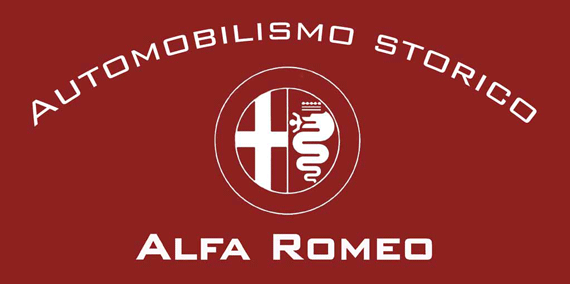
Following the success obtained in the Austrian championship reserved exclusively for Alfa Romeo Alfasud,
Alfa Romeo decided to enhance the sporty image of the car from Pomigliano d’Arco by launching the first Alfasud TI Trofeo challenge to be held on tracks in Italy and neighboring Austria.
But even the Alfasud TI needed some modifications to make it worthy of the Alfa Romeo tradition. So kits were supplied by Autodelta, which included engine mods to allow for full 1300cc engine. This would prove a huge benefit and, as it was said in Italy, “gave the snake some muscle.”
Autodelta’s Kits
The engine was based on the classic four-cylinder horizontal water-cooled, with cast-iron block and alloy heads. The engine in the Autodelta kit had displacement of 1286.796 cc, obtained by measurements of bore and stroke of 80 and 64 mm. The SOHC head had two valves per cylinder driven by a toothed belt. With a compression ratio of 11.0: 1, and powered by two Weber 44 IDFs, the Autodelta engine was able to deliver approximately 110-115 hp at 6500 rpm . The longevity of the engine was guaranteed by a wet sump system with four liters of oil, cooled by a radiator mounted in the center of the front spoiler. The transmission was a synchronized five-speed gearbox + reverse. The gears ratio remained standard, but it was permissible to use a final drive gear with an axle ratio of 9-37, 7-37, and later, 8-37. The clutch was controlled by hydraulic device.
The springs and shock absorbers were by Spica, supplied in the kit with two different settings to use with the MacPherson front suspension system. Rear suspension was already an excellent design, featuring a rear rigid axle, longitudinal and transverse rods, coil spring and a stabilizer bar was added via the kit. The fuel tank with a capacity of 50 liters was mounted under the rear seats.
The braking system featured 4 discs, with a 2-piston caliper and the system was equipped with a regulator at the rear and a brake booster. The kit came with 8″ x 13″ Campagnolo wheels and Pirelli 235/45 VR13 race tires.
Wheelbase was 2455mm, overall length 3880mm and it weighed in at 820 Kg for the first series. The body of the car was made particularly aggressive due to the installation of front and rear spoilers of generous size, and flared fenders. The interior was stripped of everything superfluous; the Autodelta kit provided the roll-bar, contoured seat for the rider, and a handheld fire extinguishers. The technical regulations allowed for a cage-type roll-bar which increased safety and at the same time stiffened the structure of the car.
An Alfasud TI equipped with the Autodelta kit immediately became an exceptional car, in both the handling and top speed, which was now close to the magic 200 km/h.
During 1976, the first season of the Trofeo Alfasud, there were hard-fought races and an extremely interesting championship. It was also considered as a reservoir in which to discover young talent. The Trofeo saw the emergence of twenty-two young Filippo Nicolini, who defeated his opponents with a wonderful series of victories, obtained with the same car feature in color in this article (see below).
Moreover, during this first season, the Alfasud had one of its best days, for on June 2, drivers and enthusiasts gathered together for a very special event. That day, at the Varano de Melegari circuit (also known as the Autodromo Riccardo Paletti), the most famous motorsport champions including Ronnie Peterson, Jody Scheckter, Alan Jones, Arturo Merzario, Emerson Fittipaldi, and many more agreed to participate in a race, along with the owners of other cars entered for the Trofeo. The proceeds of this race, called the” Corsa per il Friuli” (a race for Friuli), would be used help to build a school in the community of Vedronza in the the municipality of Lusevera which was severely damaged by the terrible earthquake in Friuli on 6 May 1976. The school would bear the name of the late Graham Hill, who died in a plane crash along with his entire team in 1975. For the record, the race was won by Paolo Galli and Arturo Merzario.
The first year of the Alfasud TI Trofeo was a year full of excitement and great promise. Based on that success, Alfa decided to organize the championship in Austria, France, Germany and Italy, and establish the Alfasud European Cup in 1977, in which the best drivers of the national trophies were to compete with eachother. In addition, there was a new trophy that included races on the icy slopes: the “Snow and Ice Trophy” held at Cortina d’Ampezzo, Baselga di Piné and Breuil Cervinia.
Unfortunately, in subsequent seasons, despite the fact that the Alfasud Trofeo was always characterized by fierce competition and breathtaking races, there began a long period of turmoil that led to the decline and subsequent neglect of the Alfasud Trofeo.
Over the years, the series became increasingly expensive, for even though the technical regulation remained virtually unchanged, there was a performance improvement of the cars thanks to increased engine power which climbed from 115 hp at 6500 rpm to 128-130 hp at 8000 rpm reached in 1981. And it became increasingly home-grown…in the last season, seven of the ten scheduled races were won by Italian drivers. The only foreign drivers to gain a victory were Spanish Zapico, Delafosse and French young and then unknown Austrian Gerhard Berger.
After the 1981season, the Alfasud TI ceded the stage to Alfasud Sprint Veloce, and the Alfasud Trofeo series was over with 151 races to its credit.
The car pictured in our article below is a ‘Trofeo Alfasud TI’ of great historical value, is the actual car with which Filippo Nicolini won the 1° Trofeo Alfasud Italy, built on the chassis as 5428168901C. This car is currently owned by Romeo De Rossi Romeo, owner of Carrozzeria Cristallo di Castelnovo Vicentino,who has reconstructed the historical car employing over three hundred hours of intense work.
Scheda Tecnica
Denominazione vettura: Alfa Romeo Alfasud ti Trofeo
Anni di attività: 1976-1981
Motore: 4 cilindri contrapposti montato anteriormente a sbalzo, monoblocco in ghisa e teste in lega leggera, raffreddato ad acqua
Alesaggio e corsa: 80,0 x 64,0 mm
Cilindrata unitaria e totale: 321,699 / 1286,796 cc
Rapporto di compressione: 11,1 : 1
Potenza massima: CV 110-115 a 6500 giri/minuto
Distribuzione: 2 valvole per cilindro, 1 albero a camme in testa per bancata
con comando a cinghia
Alimentazione: 2 carburatori Weber 44 IDF
Accensione: mono, a spinterogeno o elettronica
Lubrificazione: forzata, carter umido (4 litri)
Trasmissione: trazione anteriore, frizione monodico a secco
cambio a 5 velocità + RM, montato in posizione longitudinale
Sospensione anteriore: a ruote indipendenti, braccio trasversale con montante
telescopico e biella longitudinale, molla elicoidale, barra
stabilizzatrice
Sospensione posteriore: ad assale rigido, bielle longitudinali e biella trasversale, molla
elicoidale barra stabilizzatrice
Freni: a disco, pinze a 2 pistoncini
Sterzo: a cremagliera
Lunghezza : 3380 mm
Larghezza : 1700 mm
Passo e carreggiate ant. e post.: 2455 / 1380 / 1350 mm
Peso in ordine di marcia: 820 kg ( 800 dal 1980)
vettura in ordine di marcia con acqua, olio, accessori di sicurezza e liquido estinguente, ma senza benzina
Pneumatici ant.e post.: 235 / 45 / 13″, Pirelli
Ruote: in lega leggera, ant. e post. 8,0 x 13″
Serbatoio: capacità carburante 50 litri
Velocità massima: oltre i 200 km/h
Tuttti i vincitori dei vari trofei Alfasud
1975 Trofeo Austria Reinauer
1976 Trofeo Austria Köning
Trofeo Italia Nicolini
Corsa per i terremotati del Friuli Merzario-Galli
1977 Tofeo Austria Meier
Trofeo Francia Lemetayer
Trofeo Germania Weber
Trofeo Italia Baronio
Coppa Europa Baronio
Trofeo ‘Neve e Ghiaccio’ Righi
1978 Tofeo Austria Fink
Trofeo Francia Lemetayer
Trofeo Germania Lingmann
Trofeo Italia Calamai
Coppa Europa Calamai
Trofeo ‘Neve e Ghiaccio’ Naddeo
1979 Tofeo Austria Löffelmann
Trofeo Francia Lemetayer
Trofeo Germania Tubbesing
Trofeo Italia Drovandi
Coppa Europa Sigala
Trofeo ‘Neve e Ghiaccio’ Sigala
1980 Tofeo Austria Wendlinger
Trofeo Francia Lemetayer
Trofeo Germania Amthor
Trofeo Italia Pelachin
Trofeo ‘Neve e Ghiaccio’ Sigala
1981 Trofeo Alfasud Europa Drovandi
Trofeo ‘Neve e Ghiaccio’ Pacher
(Dati a cura del Servizio Attività Sportive Alfa Romeo)
For the 1976 season, the Trofeo Alfasud provides for awards of arrival and final ranking well distributed for each race, reserved for the first six classified and divided as follows: 350 thousand Lire, 200 thousand Lire and 150 thousand pounds Lire, to climb up to 75 thousand Lire for sixth place.
In the final standings, the top three finishers will receive respectively :
1st position: an Alfetta GT and 2 million Lire
2nd position: an Alfetta 1.8 and 1 million Lire
3rd position: an Alfasud Ti and 500 thousand Lire.
In addition, all participants who have competed at least 70% of the races, will be refunded the deposit of 250 thousand Lire required when registering for the trophy.
The prizes for the final positions at the end of the racing season were, in 1981, were of great promise:
1st position: a GTV6 2.5
2nd position: a GTV 2.0
3rd position: a Giulietta 2.0
4th position: an Alfasud Sprint Veloce 1.5
5th position: an Alfasud Ti 1.5
The sixth position added 3.000.000 to your personal belongings, the seventh 2.500.000, the eighth 2.000.000, the nineth 1.500.000 and the tenth 1.000.000 Lire. The drivers on the positions eleven to 15 received half a million Lire. (All numbers for the 1981 season.)
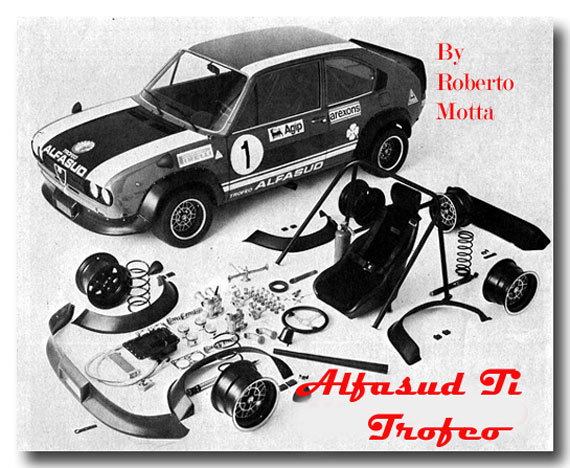
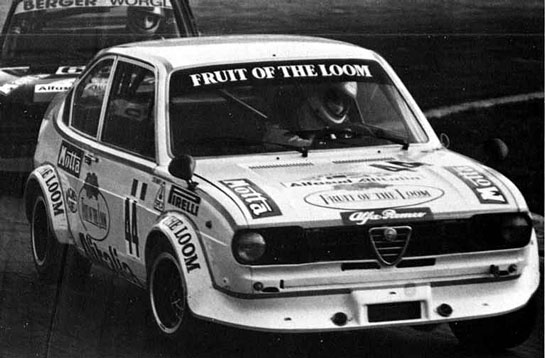
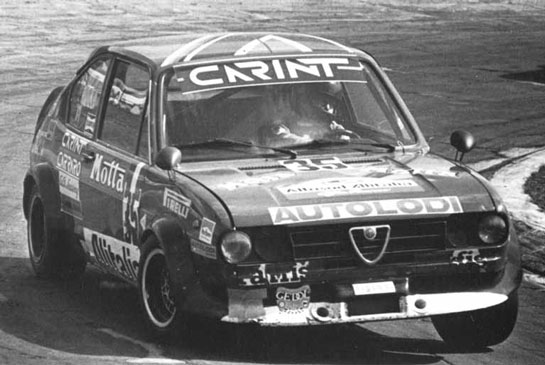
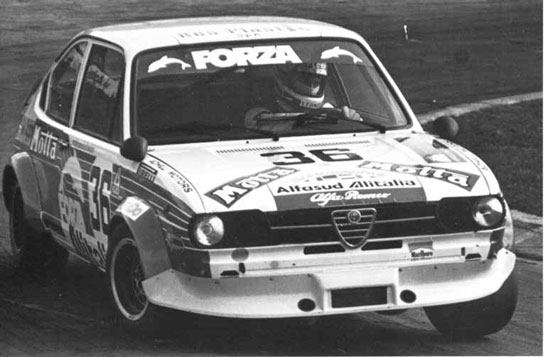
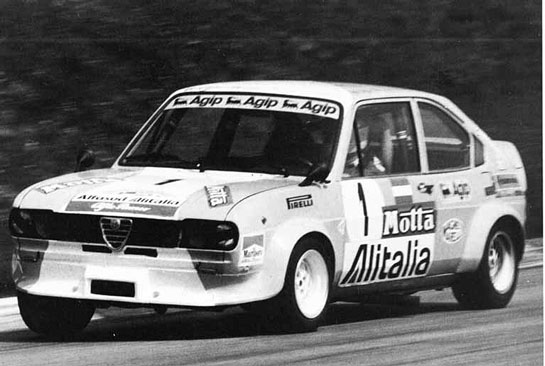
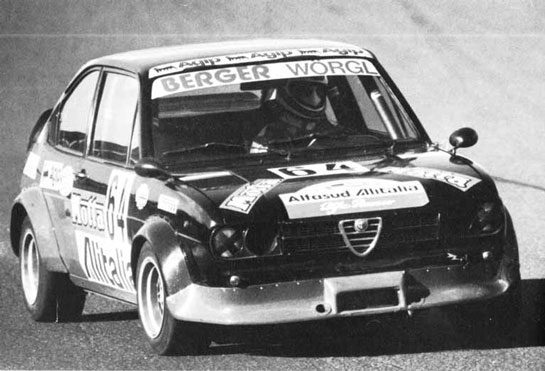
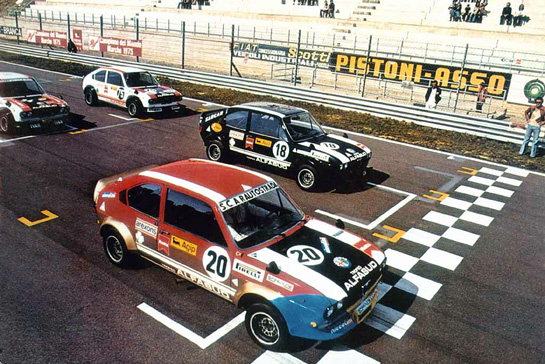
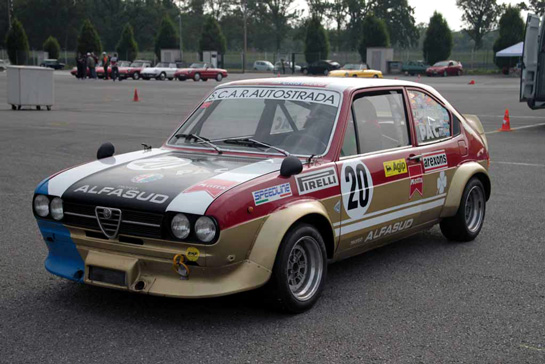

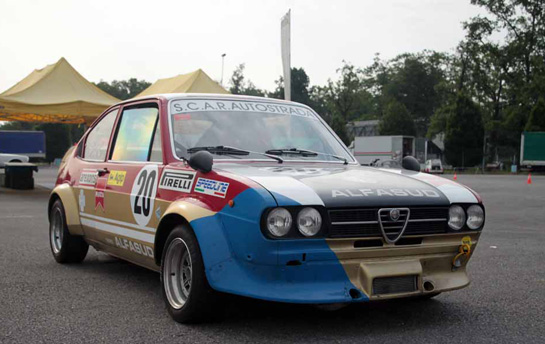

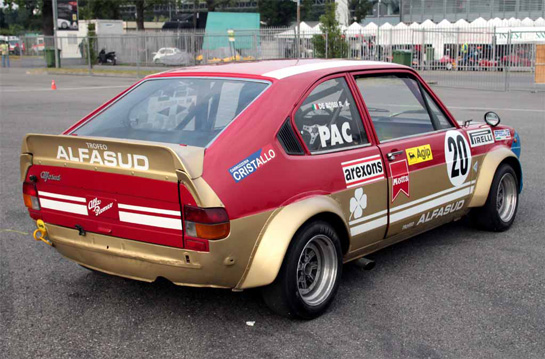
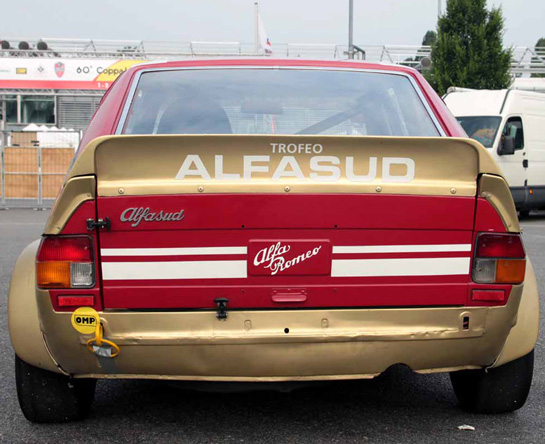
The Alfasud was such an unexpected success for Alfa. Too bad these little cars never made it to the states. They look like fun-maybe like the original mini or the Fiat 500. I’d love to get my hands on one here in the USA.
Any ideas-please send me an email.
JW
I have a rare Alfa sud Factoty Station wagon fitted with a 1.7 twin Weber engine
only 2 in Australia .Dont know how many were made
For Sale to GOOD home
Alfasud trofeo ex Nicolini scarautostrada in vendita originali condizioni,ottima per gare storiche.
Ciao,sono Romeo, sono contento che siano state pubblicate le foto dell’Alfasud Trofeo ex Niccolini ora di mia proprietà. Auto stupenda che uso regolarmente nelle gare d’epoca. Per cambio categoria potrei valutare la vendita. Info at carr_cristallo@libero.it
Hello,I’m Romeo,I’m happy that the photo of Alfasud Trofeo ex Niccolini is published in this website. Now the car is mine. It’s an excellent car that I regularly use in epoch tournament. I could value the sale because of change category. Info at carr_cristallo@libero.it
Alfasud amazing vehicles I recently own one it’s fantastic to race and give such great power